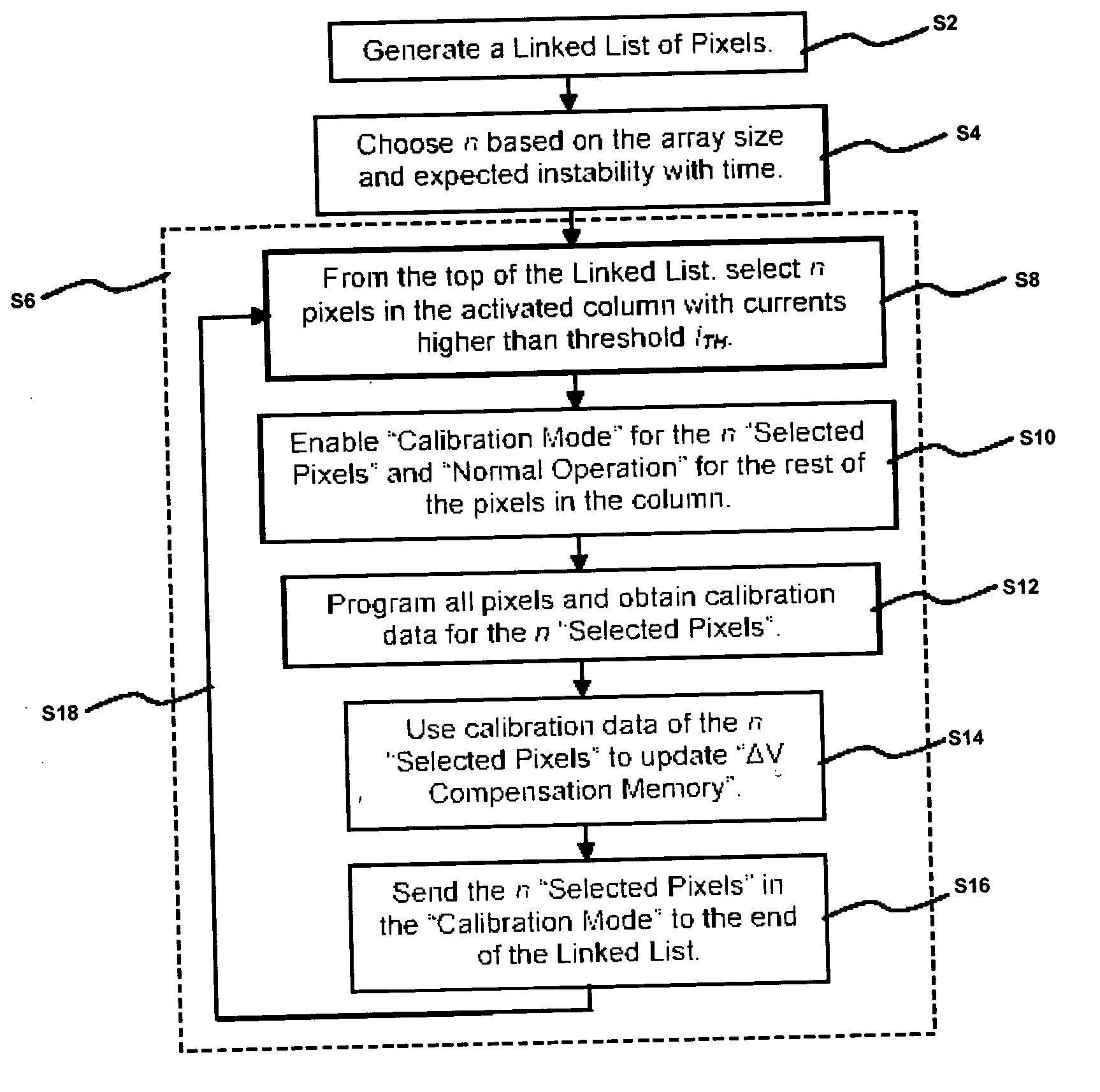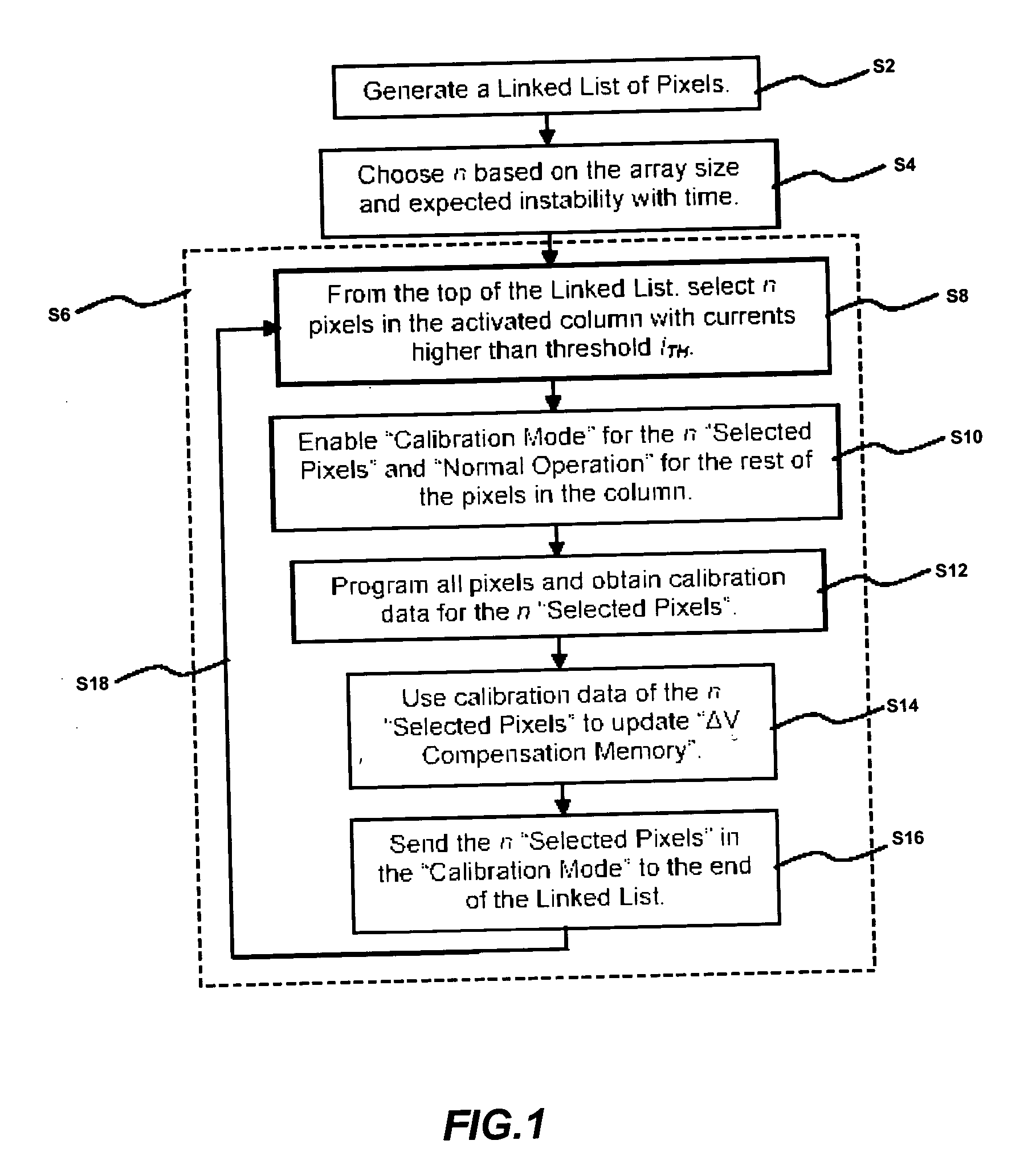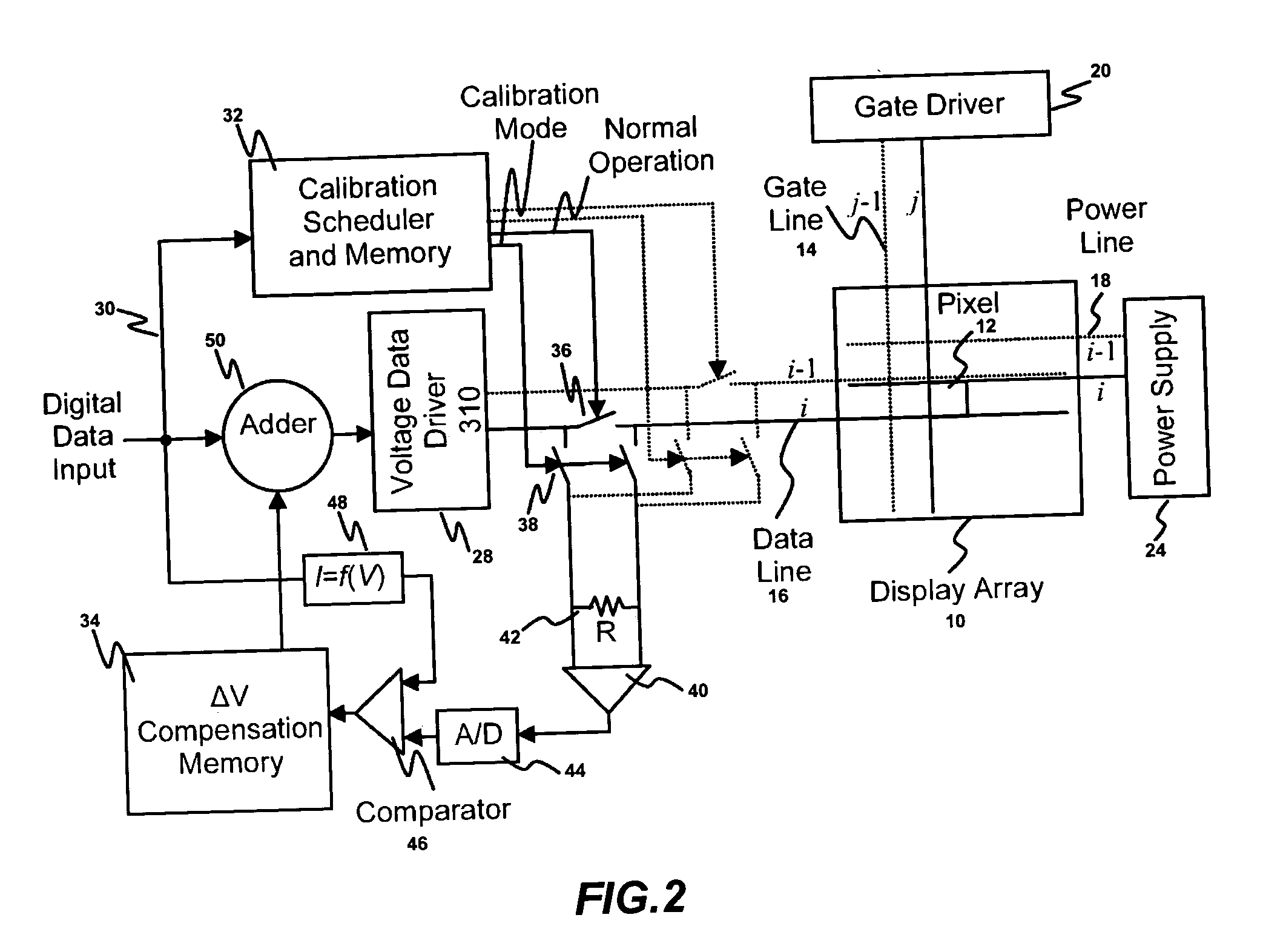Method and system for programming, calibrating and driving a light emitting device display
a technology of light-emitting devices and programming methods, applied in the field of display technologies, can solve the problems of slow current-programming of current-driven pixels, non-uniformity of large displays, and inability to provide the accuracy needed for active matrix technology
- Summary
- Abstract
- Description
- Claims
- Application Information
AI Technical Summary
Benefits of technology
Problems solved by technology
Method used
Image
Examples
Embodiment Construction
[0044] Embodiments of the present invention are described using a pixel including a light emitting device and a plurality of transistors. The light emitting device may be an organic light emitting diode (OLED). It is noted that “pixel” and “pixel circuit” may be used interchangeably.
[0045] Real-time calibration-scheduling for a display array having a plurality of pixels is described in detail. FIG. 1 illustrates a process for a calibration-scheduling in accordance with an embodiment of the present invention. According to this technique, the pixels are calibrated based on their aging and / or usage during the normal operation of the display array.
[0046] A linked list of pixels is generated in step S2. The linked list contains an identification of a pixel with high brightness for calibration. The linked list is used to schedule the priority in calibration.
[0047] In step S4, “n” is chosen based on the display size and expected instability with time (e.g. shift in characteristics of tr...
PUM
 Login to View More
Login to View More Abstract
Description
Claims
Application Information
 Login to View More
Login to View More - R&D
- Intellectual Property
- Life Sciences
- Materials
- Tech Scout
- Unparalleled Data Quality
- Higher Quality Content
- 60% Fewer Hallucinations
Browse by: Latest US Patents, China's latest patents, Technical Efficacy Thesaurus, Application Domain, Technology Topic, Popular Technical Reports.
© 2025 PatSnap. All rights reserved.Legal|Privacy policy|Modern Slavery Act Transparency Statement|Sitemap|About US| Contact US: help@patsnap.com



